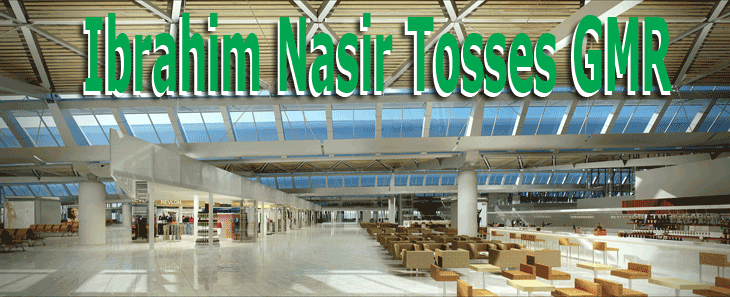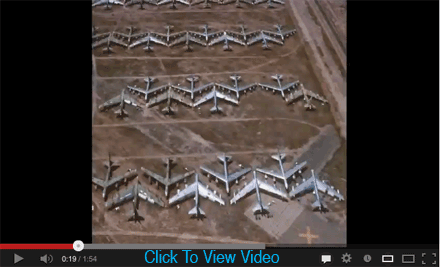
Could
increases in container
shipping freight rates
push some cargo back
to air next year?
Container lines continue
to huff and puff under
the weight of over-capacity,
even before the traditional
quiet period over
Christmas and New
Year began to exert
some market pressure.
Indeed, despite the
travails suffered
by the air cargo sector
this year, any outside
onlooker comparing
the two sectors’
relative abilities
to balance supply
and demand might conclude
that the aviation
sector was a bastion
of perfect competition.
Events in November
illustrated the madness
and the volatility
with which container
shipper customers
must contend. Almost
across the board,
in October substantial
rate hikes were announced
for Asia-North Europe
and Asia-Mediterranean
services scheduled
to start in the first
two weeks of November
in an effort to shore
up declining returns.
But then in early
November, MSC, one
of the Big 3 players
along with Maersk
Line and CMA CGM,
announced it was unilaterally
suspending its planned
General Rate Increase
on its Asia-Med services
in what many analysts
believed was a strategic
market share grab.
Rates from Asia to
the Med promptly collapsed.
This had a significant
impact for Asia-North
Europe services, where
carriers had managed
to push spot rates
up almost 40 percent
by late October to
around $1,500 per
TEU in anticipation
of the November General
Rate Increases (GRI).
As Asia-Med rates
collapsed, the differential
between prices to
southern Europe and
the North quickly
took its toll. Over
the next weeks all
the previous gains
on Asia-North Europe
were wiped out.
Ironically led by
an early MSC announcement,
lines then launched
a new round of mid-December
rate hikes across
the Asia-Europe trades
to claw back the ground
lost in November.
But despite the various
early winter schedule
cuts announced by
many companies, which
saw the idled fleet
start to tick up,
there was little positive
market sentiment to
be found that a) the
hikes would be accepted
by customers and b)
most lines would be
able to resist keeping
ships idled if rates
showed even the slightest
glimmer of rising
on key trades.
Of course, the real
reason for the volatility
is not sabotage by
MSC, but the simple
fact that there are
too many container
ships in the world
fleet at present.
And lines have proven
unable or unwilling
to idle vessels in
sufficient numbers
for long enough to
alter the imbalance.
On the Asia-Europe
trades, where the
new, bigger Ultra
Large Container Ships
are deployed, matters
have, of course, been
made worse by recession
and declining consumer
demand in many regions
of Europe. An unsteady
recovery in China
and weakness on key
Asian lanes such as
China-Japan, as well
as doubts over the
strength of Chinese
and Indian economic
growth, have also
added to container
shipping gloom.
However, there are
signs that this year’s
volatility, and the
ongoing battle by
lines to try and find
a way of keeping ships
deployed profitably,
may ease into something
more sustainable in
2013, a trend that
could prove a bonus
to air cargo operators
hit by the shift to
sea of some marginal
cargoes to take advantage
of bottom-feeding
rates.
The Container Freight
Derivatives Association
(CFDA) reported in
December that the
CFDA forward curve
was contango, whereby
future prices were
trading at a premium
to spot. This generally
proves a reliable
guide to future freight
rate shifts.
A new report by analysts
at Nomura is also
bullish on rate increases.
It predicts that U.S.
and EU quarterly GDP
will likely bottom
out in the first quarter
of next year. This,
allied with liner
supply discipline
and the continuation
of capacity-reducing
strategies such as
super slow steaming,
will help boost rates.
If carriers can keep
a lid on costs, Nomura
predicts an improved
performance next year
by most lines.
“The recovery
that we now expect
is likely to be choppy
and not plain sailing,
with volatile freight
rates...[but] we now
expect earnings, demand
and rates to rebound
from 1Q13,”
said the report.
“We see a pattern
of monthly freight
rate increases being
partially successful,
but then followed
by rate declines.
“Yet importantly
the sector should
stay profitable, with
transpacific trades
more stable due to
annual contracts.
Also, 2014 is looking
more likely to be
a good year given
the lack of newbuilding
deliveries.
“Successful
capacity control is
in the hands of carriers.”
But even a return
to a slightly more
balanced market next
year is no guarantee
of stability for shippers.
“As history
points out, what goes
up must come down.
And then up. And then
down again,”
said the CDFA.
“The increasing
volatility in freight
rates in the past
three years has meant
uncertainty is the
new certainty for
the industry.”
SkyKing
|








 On
November 25, 2010,
at an official ceremony,
Ibrahim Saleem, left
(also now removed
from his position)
Chairman of Maldives
Airports Company Limited
handed over the aerodrome
license to Kiran Kumar
Grandhi, right
Business Chairman,
Airports, GMR Group.
On
November 25, 2010,
at an official ceremony,
Ibrahim Saleem, left
(also now removed
from his position)
Chairman of Maldives
Airports Company Limited
handed over the aerodrome
license to Kiran Kumar
Grandhi, right
Business Chairman,
Airports, GMR Group.
 RE:
Ibrahim Nasir
Male Airport
RE:
Ibrahim Nasir
Male Airport

